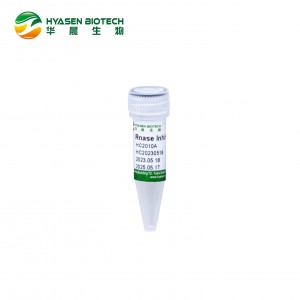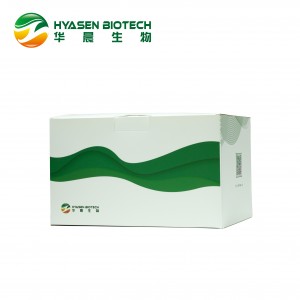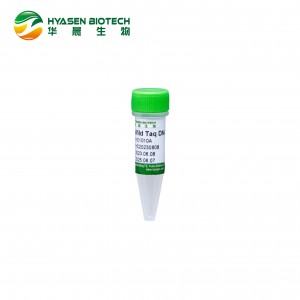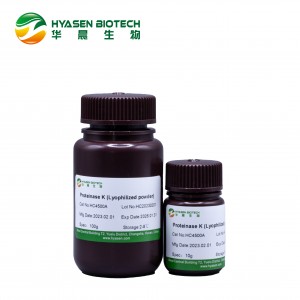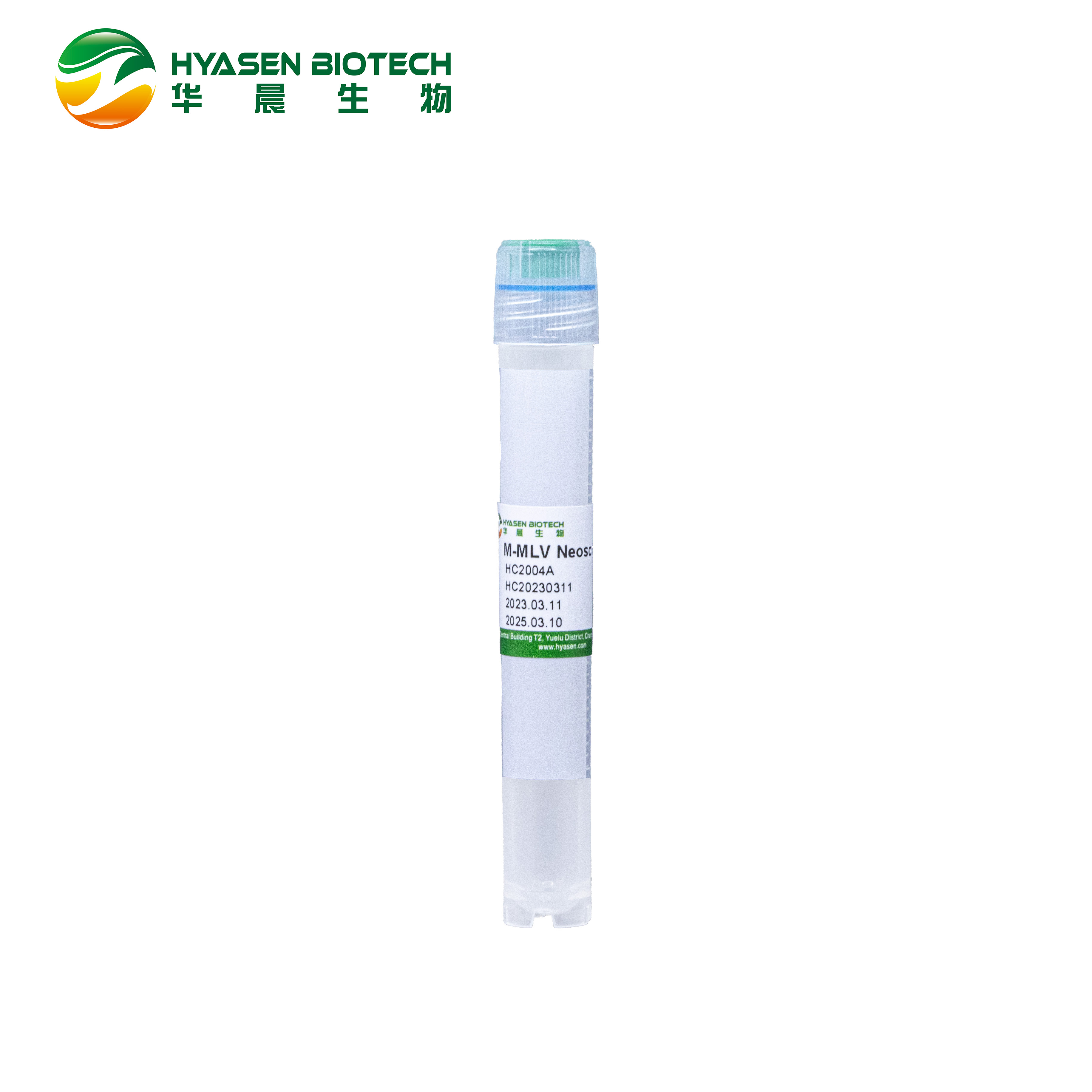
M-MLV Neoscript Reverse Transcriptase
Neoscript Reverse Transcriptase is a reverse transcriptase obtained by mutation screening of the M-MLV gene of Moloney murine leukemia virus origin and expression in E.coli. The enzyme removes RNase H activity, has higher temperature tolerance, and is suitable for high-temperature reverse transcription. Therefore, it is helpful for eliminating the unfavorable effects of the RNA high-level structure and non-specific factors on cDNA synthesis, and has higher stability and reverse transcription synthesis ability. The enzyme has higher stability and reverse transcription synthesis ability.
Components
1.200 U/μL Neoscript Reverse Transcriptase
2.5 × First-Strand Buffer (optional)
* 5 × First-Strand Buffer does not contain dNTP, please add dNTPs when preparing the reaction system
Recommended Application
1.One-step qRT-PCR.
2.RNA virus detection.
Storage Condition
-20°C for long term storage, should be mixed well before use, avoid frequent freeze-thaw.
Unit Definition
One unit incorporates 1 nmol of dTTP in 10 minutes at 37°C using poly(A)•oligo(dT)25 as template/primer.
Quality Control
1.SDS-PAGE electrophoretic purity greater than 98%.
2.Amplification sensitivity, batch-to-batch control, stability.
3.No exogenous nuclease activity, no exogenous endonuclease or exonuclease contamination
Reaction Setup for First Chain Reaction Solution
1.Preparation of the reaction mixture
|
Components |
Volume |
|
Oligo(dT) 12-18 Primer or Random Primer a Or Gene Specific Primers b |
50 pmol |
|
50 pmol (20-100 pmol) |
|
|
2 pmol |
|
|
10 mM dNTP |
1 μL |
|
Template RNA |
Total RNA≤ 5μg; mRNA≤ 1 μg |
|
RNase-free dH2O |
To 10 μL |
Notes: a/b: Please select different types of primers according to your experimental needs.
2.Heat at 65°C for 5mins and cool rapidly on ice for 2mins.
3.Add the following components to the above system to a total volume of 20µL and mix gently:
|
Components |
Volume (μL) |
|
5 × First-Strand Buffer |
4 |
|
Neoscript Reverse Transcriptase (200 U/μL) |
1 |
|
RNase inhibitor (40 U/μL) |
1 |
|
RNase-free dH2O |
To 20 μL |
4.Please perform the reaction according to the following conditions:
(1) If Random Primer is used, the reaction should be carried out at 25℃ for 10mins, and then at 50℃ for 30~60mins;
(2) If Oligo dT or specific primers are used, the reaction should be carried out at 50℃ for 30~60mins.
5.Heat at 95℃ for 5mins to inactivate Neoscript Reverse Transcriptase and terminate the reaction.
6.Reverse transcription products can be used directly in PCR reaction and fluorescence quantitative PCR reaction, or stored at -20℃ for a long time.
PCR Reaction:
1.Preparation of the reaction mixture
|
Components |
Concentration |
|
10 × PCR Buffer (dNTP free, Mg²+ free) |
1× |
|
dNTPs (10mM each dNTP) |
200 μM |
|
25 mM MgCl2 |
1-4 mM |
|
Taq DNA Polymerase (5U/μL) |
2-2.5 U |
|
Primer 1 (10 μM) |
0.2-1 μM |
|
Primer 2 (10 μM) |
0.2-1 μM |
|
Template a |
≤10% First Chain Reaction Solution (2 μL) |
|
ddH2O |
To 50 μL |
Notes: a: If too much first chain reaction solution is added, the PCR reaction may be inhibited.
2.PCR Reaction Procedure
|
Step |
Temperature |
Time |
Cycles |
|
Pre-denaturation |
95℃ |
2-5 mins |
1 |
|
Denaturation |
95℃ |
10-20 sec |
30-40 |
|
Annealing |
50-60℃ |
10-30 sec |
|
|
Extension |
72℃ |
10-60 sec |
Notes
1.Suitable for reverse transcription temperature optimization in the range of 42℃~55℃.
2.It has better stability, is suitable for high temperature reverse transcription amplification. In addition, it is favorable for efficiently passing through complex structural regions of RNA. Also, it is suitable for one-step multiplex fluorescence quantitative RT-PCR detection.
3.Good compatibility with various PCR amplification enzymes and is suitable for high sensitivity RT-PCR reactions.
4.Suitable for high sensitivity one-step fluorescence quantitative RT-PCR reaction, effectively improve the detection rate of low concentration of templates.
5.Suitable for cDNA library construction.






